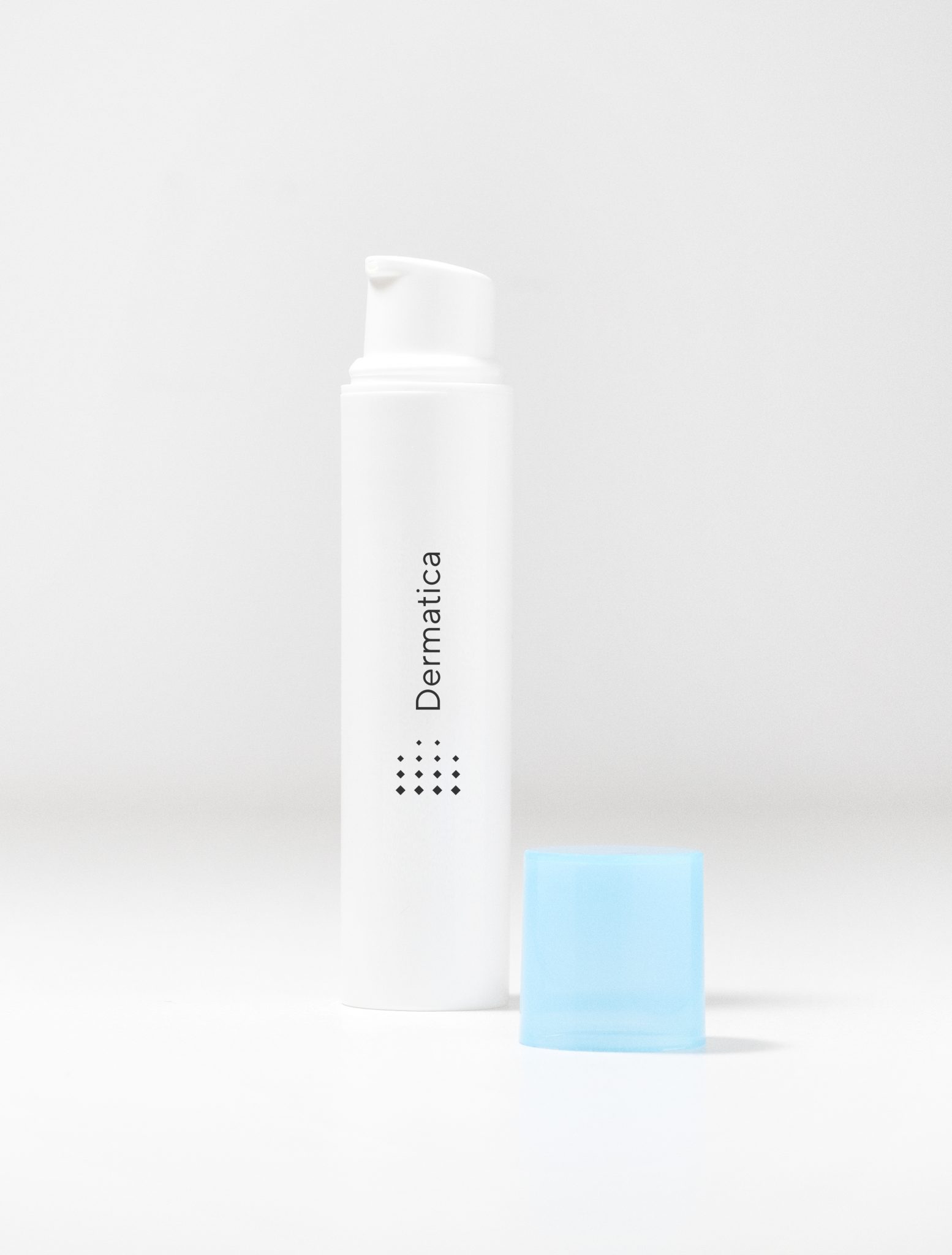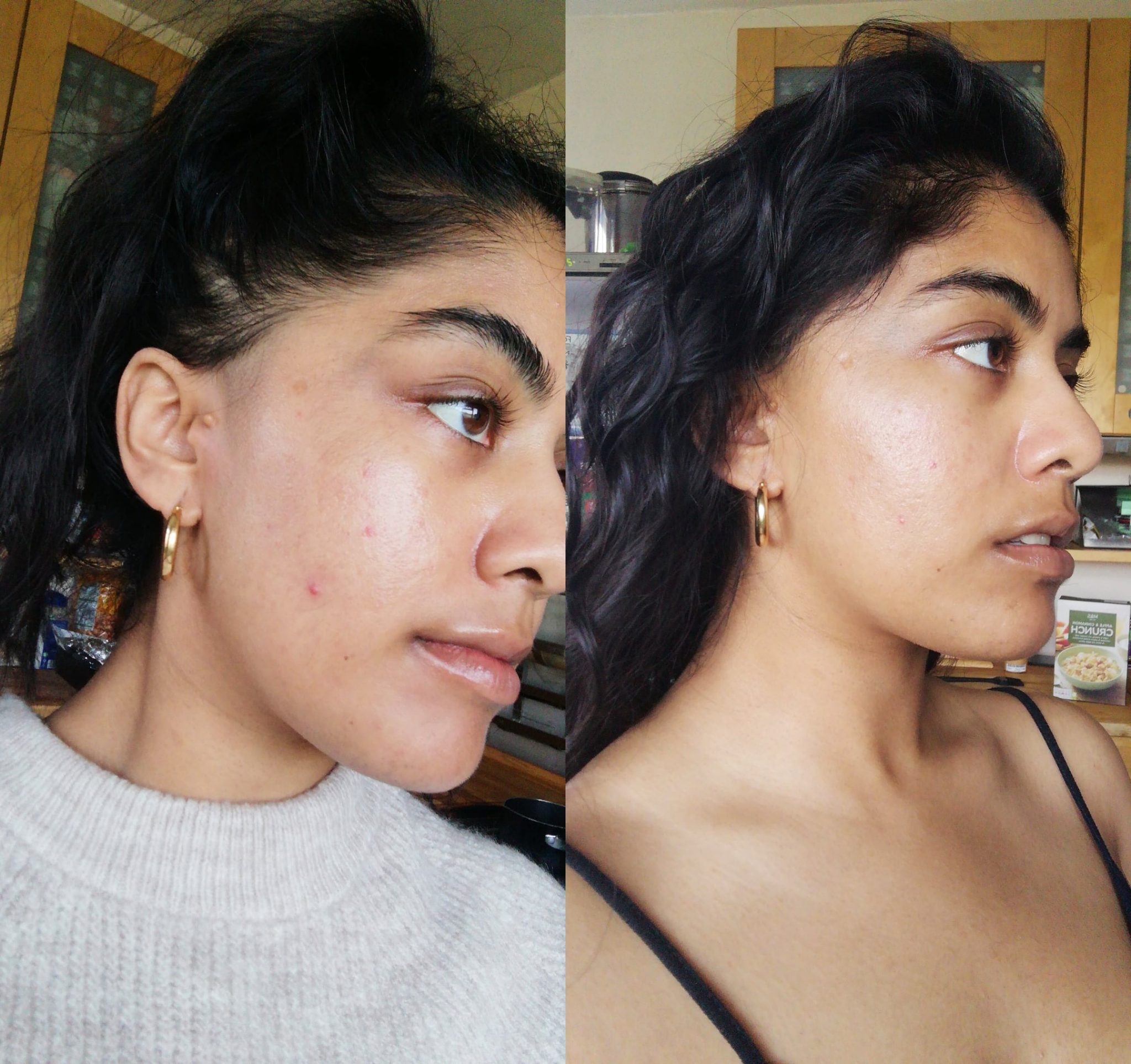Acne can be pretty tricky when you don’t know how to deal with it.Stylist’s beauty assistant Kiran Meeda has been trialling an online dermatology service to see if it can help her acne-prone skin.
For years now, the road to clear, glowy skin has been riddled with hits and misses. My mild acne-prone and scarred skin is a tricky thing to improve. Not to mention my skin tends to run the risk of being quite oily, so trying to maintain moisture levels is a task. Amongst the many, many issues I’ve encountered, there was a raved about cleanser that actually broke me out further, a slight liquid exfoliator addiction and a vitamin C serum that sadly, did not solve all of my hangups – no matter how many times I applied it.
There are a few things that have been working to improve the health of my skin though: a salicylic acid cleanser in Bybi’s Crystal Clear Gel Cleanser, £24, which maintains my skin’s moisture whilst preventing the formation of new spots; a light gel day moisturiser such as The Inkey List’s Snow Mushroom Moisturiser, £9.99; an SPF50, usually The Body Shop Skin Defense Multi-Protection Lotion SPF, £22, which includes a touch of vitamin C; and a thicker night moisturiser in the form of Ren’s Overnight Glow Dark Spot Sleeping Cream, £49 that helps reduce hyperpigmentation.
And while I’ve spent so long trying ingredients in various product textures, I’ve come to a conclusion of sorts. My skin seems to absorb a cream more effectively than oils, gels or serums.
So, my search now turns to finding a powerhouse cream that reduces redness, minimises spots and gives me a more even skin tone.
Sounds like I’m asking for a lot, right? Well, I thought the same, until I heard about Dermatica.
It’s an online dermatology service run by a team of consultant dermatologists, pharmacists, GPs, clinical researchers and scientists. They’re a seriously qualified and experienced group and have undertaken specific research to create individual treatments for acne, fine lines and wrinkles, pigmentation and melasma. The Dermatica treatment is £19.99 a month, plus £2.90 for shipping, so is actually cheaper than a lot of serums.
And it all starts with a simple skin questionnaire on their website. Eager to test this out and see if it can actually improve my skin, I filled it out in minutes. They ask about what your current skincare routine is like, what you want to improve and submit a picture of your skin from the front, left and right sides so their experts can make an assessment.
It took a few days for one of the Dermatica experts to review the information and pictures I shared, but it wasn’t long before they got back to me with my acne treatment. It’s important to know that they actually mix everything in their labs, and make use of a set of ingredients. They include adapalene, a topical retinoid; azelaic acid, which attacks bacteria in the skin; and benzoyl peroxide, which kills bacteria, reduces inflammation and cleans pores.
There’s also clindamycin, an antibiotic that stops bacteria known to cause acne and reduces swelling; niacinamide, which helps with fine lines and pigmentation; and tretinoin, a prescription-strength retinoid.
Depending on what your individual skin needs and wants are, Dermatica uses a specific combination of ingredients and measures out how much will be used. Every product has a gel-like cream consistency that absorbs easily into the skin.
For a month now, I’ve been trialling my Dermatica treatment which includes 0.1% adapalene, 4% niacinamide and 1% clindamycin and I can see a real difference in my skin’s appearance.
There were a few things I wanted to specifically tackle: the redness of my skin, the frequent blemishes and to even out my skintone. In the first month Dermatica’s lotion has helped with it all in varying degrees.
Because my treatment contains retinol, naturally, for the first few weeks, my skin was pretty dry and flakey. While it sounds scary, that’s completely normal as your skin adjusts to the strength of retinol.
After about three weeks, I noticed that my skin appeared, dare I say it, naturally glowy. The redness and spots started to gradually subside, but the best result of all? I’ve not had to deal with the frustration of a new spot sporadically appearing every week.
Having dealt with an onslaught of breakouts since my teenage years, I can categorically say that this is the first time spots haven’t kept coming to the surface.
Safe to say I’m impressed with the results so far. And when I have had questions about my treatment, online services mean you can email the team to get their thoughts. There was everything available to make sure that I was comfortable with my Dermatica treatment; I’ve even been posting pictures to an online dashboard to track my progress.
As long as you follow the instructions that come with the treatment, you’ll see a change. Throughout the treatment, I have kept my skincare routine really simple and make sure it covers the basics: a gentle cleanser, a barrier function day moisturiser, SPF and a thicker, nourishing night moisturiser.
Of course my skin is by no means completely clear, but if I’ve learnt anything it’s that skincare is a marathon, not a sprint.
There’s still pigmentation and acne scarring that I’ll be working to improve, but hopefully with further adjustments from my Dermatica prescription I can do just that.
Check out dermatica.co.uk for more information.
Images: courtesy of brand
Source: Read Full Article

